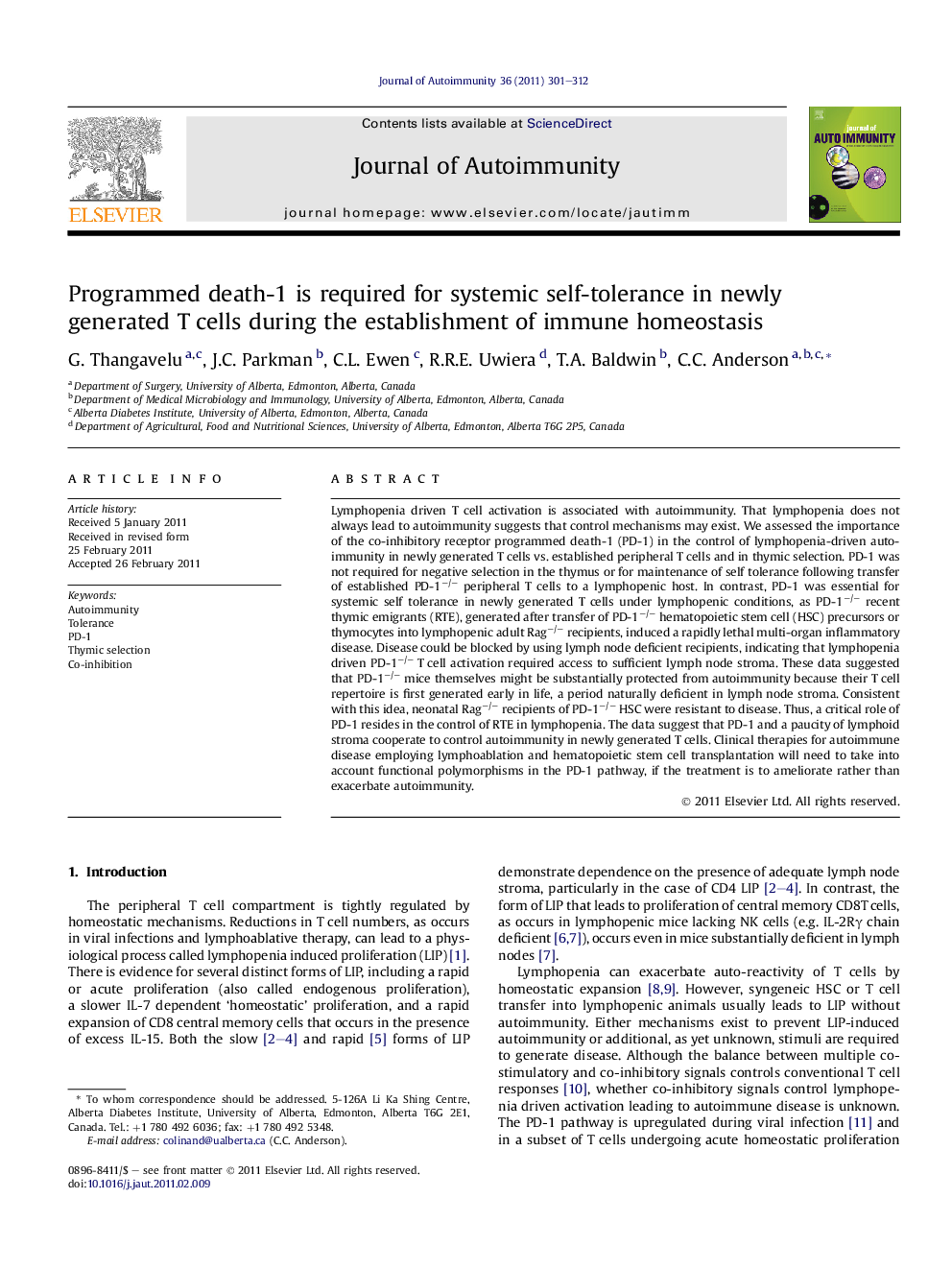| Article ID | Journal | Published Year | Pages | File Type |
|---|---|---|---|---|
| 6119434 | Journal of Autoimmunity | 2011 | 12 Pages |
Abstract
Lymphopenia driven T cell activation is associated with autoimmunity. That lymphopenia does not always lead to autoimmunity suggests that control mechanisms may exist. We assessed the importance of the co-inhibitory receptor programmed death-1 (PD-1) in the control of lymphopenia-driven autoimmunity in newly generated T cells vs. established peripheral T cells and in thymic selection. PD-1 was not required for negative selection in the thymus or for maintenance of self tolerance following transfer of established PD-1â/â peripheral T cells to a lymphopenic host. In contrast, PD-1 was essential for systemic self tolerance in newly generated T cells under lymphopenic conditions, as PD-1â/â recent thymic emigrants (RTE), generated after transfer of PD-1â/â hematopoietic stem cell (HSC) precursors or thymocytes into lymphopenic adult Ragâ/â recipients, induced a rapidly lethal multi-organ inflammatory disease. Disease could be blocked by using lymph node deficient recipients, indicating that lymphopenia driven PD-1â/â T cell activation required access to sufficient lymph node stroma. These data suggested that PD-1â/â mice themselves might be substantially protected from autoimmunity because their T cell repertoire is first generated early in life, a period naturally deficient in lymph node stroma. Consistent with this idea, neonatal Ragâ/â recipients of PD-1â/â HSC were resistant to disease. Thus, a critical role of PD-1 resides in the control of RTE in lymphopenia. The data suggest that PD-1 and a paucity of lymphoid stroma cooperate to control autoimmunity in newly generated T cells. Clinical therapies for autoimmune disease employing lymphoablation and hematopoietic stem cell transplantation will need to take into account functional polymorphisms in the PD-1 pathway, if the treatment is to ameliorate rather than exacerbate autoimmunity.
Related Topics
Life Sciences
Immunology and Microbiology
Immunology
Authors
G. Thangavelu, J.C. Parkman, C.L. Ewen, R.R.E. Uwiera, T.A. Baldwin, C.C. Anderson,
